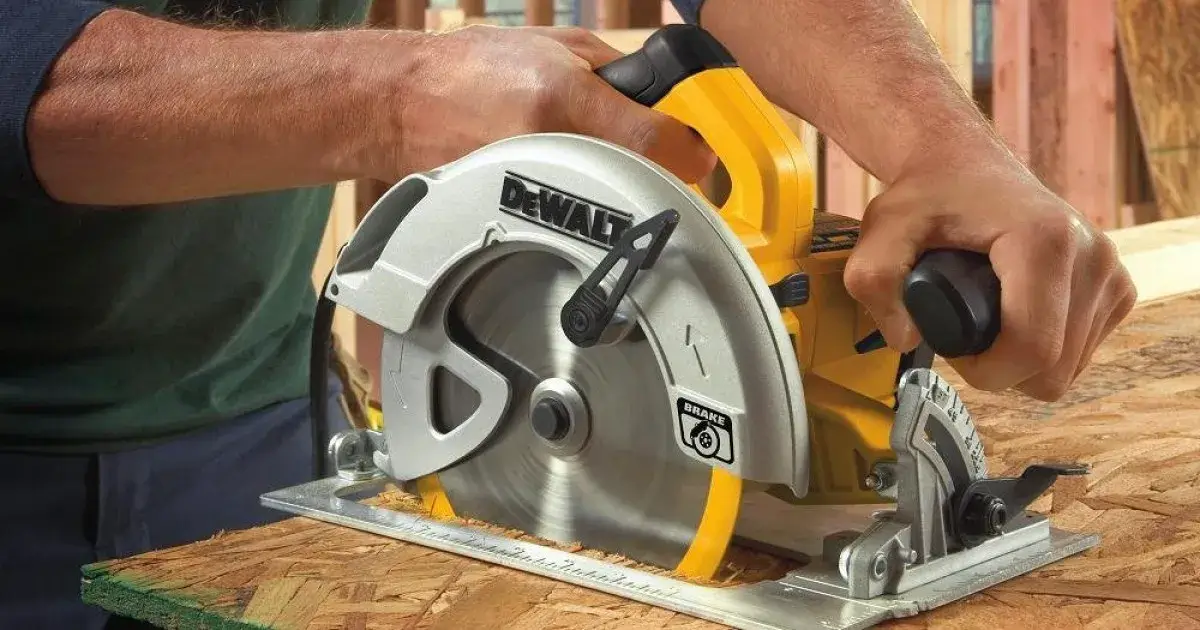A circular saw is a versatile and powerful tool that can cut through different materials, such as wood, metal, plastic, and concrete. However, when it comes to cutting wood, there is a common question that many DIYers and woodworkers have: do you cut wood up or down on a circular saw?
The Correct Answer: Cut Wood Down on a Circular Saw
The correct answer is that you should cut wood down on a circular saw. This means that the blade of the circular saw should rotate in a clockwise direction and cut the wood from the top to the bottom. This way, you will get a cleaner and smoother cut, as well as reduce the chances of splintering, tearing, and kickback.
Why You Should Cut Wood Down on a Circular Saw
There are several reasons why cutting wood down on a circular saw is the best practice. Here are some of them:
Cleaner and smoother cut: When you cut wood down on a circular saw, the teeth of the blade will cut the wood fibers from the top to the bottom, leaving a smooth and clean edge. On the other hand, if you cut wood up on a circular saw, the teeth of the blade will pull the wood fibers from the bottom to the top, creating a rough and jagged edge. This can affect the quality and appearance of your project, especially if you are working with hardwoods or plywood.
Reduced splintering and tearing: Splintering and tearing are common problems that occur when cutting wood with a circular saw. Splintering is when small pieces of wood break off from the edge of the cut, while tearing is when the wood fibers are ripped apart along the grain.
Both of these issues can ruin the look and integrity of your wood piece. When you cut wood down on a circular saw, you will minimize the amount of splintering and tearing, as the blade will cut the wood fibers in the same direction as the grain. However, if you cut wood up on a circular saw, you will increase the amount of splintering and tearing, as the blade will cut the wood fibers against the grain.
Reduced kickback: Kickback is a dangerous phenomenon that happens when the blade of the circular saw binds or stalls in the wood, causing the saw to jerk back towards the operator. Kickback can result in serious injuries or even death, so it is important to avoid it at all costs. One of the factors that can cause kickback is the direction of the blade rotation.
When you cut wood down on a circular saw, the blade will push the wood away from the saw, creating a downward force that keeps the saw stable and in control. However, if you cut wood up on a circular saw, the blade will pull the wood towards the saw, creating an upward force that can lift the saw off the wood and cause it to kick back.
How to Cut Wood Down on a Circular Saw Safely and Effectively
Now that you know why you should cut wood down on a circular saw, here are some tips on how to do it safely and effectively:
Use the right blade: The blade of the circular saw is the most important component that determines the quality and accuracy of the cut. You should choose a blade that is suitable for the type and thickness of the wood you are cutting, as well as the speed and power of your circular saw. Generally, you should use a blade with more teeth for finer and smoother cuts, and a blade with fewer teeth for faster and rougher cuts. You should also make sure that the blade is sharp, clean, and free of rust and debris.
Set the correct depth: The depth of the cut is another factor that affects the performance and safety of the circular saw. You should set the depth of the cut so that the blade extends about 1/4 inch below the wood. This will ensure that the blade cuts through the wood completely, without wasting energy or creating excess heat. It will also reduce the risk of kickback, as the blade will have less contact with the wood. To set the depth of the cut, you can use the depth adjustment lever or knob on your circular saw, and measure the distance between the blade and the base plate.
Mark and clamp the wood: Before you start cutting, you should mark the line of the cut on the wood with a pencil, ruler, or chalk. This will help you guide the circular saw along the desired path and achieve a straight and accurate cut. You should also clamp the wood securely to a stable work surface, such as a sawhorse or a table. This will prevent the wood from moving or slipping during the cut, which can cause errors or injuries. You should also support the wood on both sides of the cut, to avoid sagging or breaking.
Align and follow the blade: When you are ready to cut, you should align the blade of the circular saw with the marked line on the wood, and make sure that the base plate is flat and flush against the wood. You should also follow the blade with your eyes, and not the notch or the laser on the circular saw. The notch or the laser are only approximate indicators of the blade position, and they can be affected by the angle or the tilt of the saw. The blade is the only reliable reference for the actual cut, so you should keep it in sight at all times.
Start and finish the cut: To start the cut, you should squeeze the trigger of the circular saw and let the blade reach its full speed before touching the wood. You should then slowly and steadily push the saw forward, following the marked line and keeping the blade aligned with it. You should avoid twisting, tilting, or forcing the saw, as this can cause the blade to bind or wander.
You should also maintain a firm and comfortable grip on the saw, and keep your hands and fingers away from the blade. To finish the cut, you should release the trigger and let the blade stop completely before lifting the saw off the wood. You should also wait for the blade to stop before removing the clamps or the supports from the wood.
Conclusion
Cutting wood with a circular saw is a common and useful skill that can help you with various projects, from building furniture to repairing fences. However, you should always cut wood down on a circular saw, as this will give you a cleaner and smoother cut, as well as reduce the chances of splintering, tearing, and kickback.
You should also follow some best practices, such as using the right blade, setting the correct depth, marking and clamping the wood, aligning and following the blade, and starting and finishing the cut safely and effectively. By doing so, you will be able to cut wood with a circular saw like a pro, and achieve the results you want.




